Welcome to my last blog post. Now, we will discuss an issue of the so-called frozen conflicts. Generally, they are the remains of the wars and conflicts which were not solved. We will consider on the frozen conflicts in the post-Soviet area. More specifically we will focus on the area of Transnistria. This region is quite forgotten and just a few people understand the origin of the conflict. And that’s exactly what the last post will be about- an explanation of the frozen conflict in Transnistria and a detection of a role of Russia in it. So, the main questions for the last post are: “What happened in Transnistria and how Russia influenced these events?” At first, I will describe the background of the conflict in Transnistria and then the conflict itself. During the post, there will be highlighted a role of Russia.
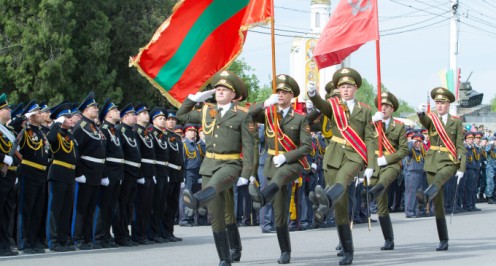
Picture 01: Transnistrian army
FROZEN CONFLICT
First of all, let me introduce you a concept “frozen conflict”. The history of frozen conflicts in the post-Soviet area started with a fall of the Soviet Union. Some successor states had a problem with the regions which didn’t want to accept the new governments. These separatist regions were Chechnya, Abkhazia, South Ossetia, Nagorno-Karabakh, and Transnistria. The separatists prevailed on the battlefield (with exception of Chechnya) but didn’t get an international recognition. It has led to a confiscation of the conflicts. They are marked as frozen conflicts. But the frozen phase of the conflicts doesn’t have to last forever. For example, in the year 2008, Russia “defrost” the conflict in South Ossetia and Abkhazia and the war followed.
TRANSNISTRIA
Geographical facts
Transnistria (officially the Pridnestrovian Moldavian Republic) is a landlocked self-proclaimed state. The only entities that formally recognize Transnistria as an independent state are South Ossetia and Abkhazia, whose independence is recognized only by Russia. Transnistria is an area between the river Dniester and the borders with Ukraine. The capital is Tiraspol. In Transnistria, there live around 475 000 people. The most of them are Moldovans (32%), Russians (30%), Ukrainians (29%). People speak Russian, Moldavan, and Ukrainian. Transnistria hasn’t got any historical borders and has almost no natural resources.
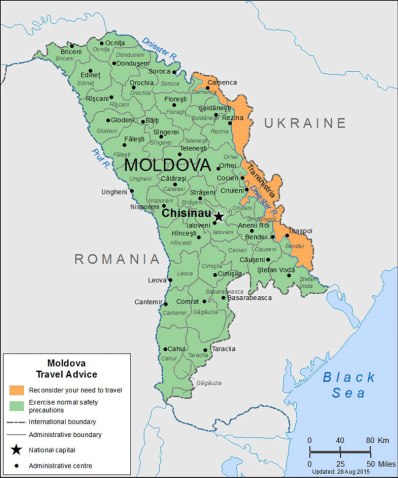
Picture 02: Map of Moldova and Transnistria
Transnistria is famous because of a criminality, organized crime, and a black market with weapons. Because Moldova refuses the separation of this region and doesn’t want to secure the borders the selling of weapons is possible and widespread. In Transnistria, there is a control of mass media.
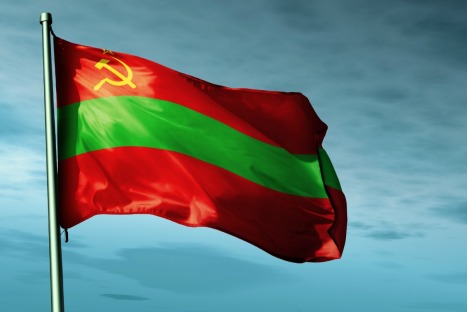
Picture 03: Flag of Transnistria
Historical background
If we want to understand this conflict, we have to begin in the far history. The origin of the conflict between Transnistria and Moldova can be found in the historical evolution of both areas because it was considerably separated. Moldova was under the control of the Ottoman dynasty during the 16th century. The borders were created by the river Dniester. On the other hand, Transnistria was a part of the Grand Duchy of Lithuania since the 15th century and it was under the influence of Russia since the end of the 18th century. In the year 1812, Russia conquered the area of Moldova and connected Transnistria and Moldova. For some time, Moldova was under the control of Romania. But in the year 1940, the Moldavian Soviet Socialist Republic was created and the both areas (Moldova and Transnistria) were united again. Moldova was one of the USSR’s fifteen union republics.
So, in the area of Moldova lived Moldovans who were affiliated with Romanians. On the other hand, in the area of Transnistria, there were predominantly Russians and Ukrainians.
During the control of the Soviet Union, there was the main industry in Transnistria and a lot of Russians came to work there. This helped to russification of Transnistria. After the fall of the Iron Curtain, the independent Republic of Moldova was established in the year 1991. A lot of Moldavian politicians wanted to join Moldova to Romania again. But the people on the east part of the country were against. After these events, the separatist Transnistrian Moldovan Soviet Socialist Republic was proclaimed. In August 1991, the declaration of the Independent Pridnestrovian Moldavian Republic was created and Igor Smirnov was elected as the first president. The Moldavan parliament responded by declaring both claims illegal.
Transnistrian War
The so-called Transnistrian War, which led to an estimated 700 deaths and 100 000 displaced persons, broke out in the months following the dissolution of the Soviet Union at the end of 1991. The biggest clashed were during spring 1992 when Moldavians troops wanted to recover their control under the city Bendery. In March 1992, escalating violence in and around Transnistria led the Moldavan parliament to declare a state of emergency. In the war, there fought separatist fighters from Transnistria, pro-Soviet volunteers and the Russian troops, specifically 14th Guards Army. This was the main problem. The war went so far that Snegur demanded that Russia must withdraw the 14th Guards Army from Moldovan territory and stop providing the separatists with arms or Chişinău might declare war on Russia. Yeltsin, the first President of the Russian Federation, wanted to end the conflict but he didn’t want Russian in Transnistria to be discriminated. On 21st June 1992, Russian and Moldavan presidents signed the armistice in Moscow. A tripartite Joint Control Commission was established by the representatives from Russia, Moldova, and Transnistria. Moreover, a peace-keeping force was established. Even in this case, the force was created by the representatives from all three areas. The demilitarized zone was established too. After these events, the conflict had frozen.
Situation after the war
What did the situation mean for Moldova? The loss of this area meant an economic weakness for Moldova. There were around 1/3 of the industrial sector and the bulk of energy production. On the other hand, in Transnistria, there were formed some quasi-state structures such as the government, the president, justice and the administration. But the most important seats have Russians or Ukrainians.
Russian support
The very existence of Transnistria is dependent on Russia. Russia provides economic and material support to Transnistria. The country is dependent on Russian gas supply by the firm Gazprom. Russia supports Transnistria in the areas such as education, legislation, and healthcare. We can claim that Transnistria is a product of Russian power policy in the region. The area is an important spur of Russian influence in West. Through Transnistria, Russia can influence even the decision by Moldova.
Russian troops in Transnistria
Russia helps Transnistria to from the military point of view. Russia helped with the training of the Transnistrian soldiers. Transnistria puts emphasis on the army. Despite the huge difference in population of Moldova (3 547 000) and Transnistria (475 000), both countries have roughly an equally large armed forces.
But the presence of the Russian troops in Transnistria is the main problem. Moldova takes the presence of Russian soldiers as a violation of its sovereignty. Transnistrian’s representatives claim that Russian soldiers ensure stability in the region. Although the Russian government agreed to the withdrawal of troops in October 1993, it never happened because the agreement wasn’t ratified. During the year 2015, 14th Guards Army which was present in Transnistria was reorganized into the Operational Group of Russian Forces and it stayed there, but the number of soldiers was reduced. Under the pressure of the OSCE, Russia has started to withdraw their military capacity from Transnistria, but it stopped in 2003. The presence of Russia troops in Transnistria is essential for Russia because it is stabilization factor in the area.
Russian influence
In the case of Transnistria, Russia used diplomacy too. Its effort resulted into the signature of the Bases for Normalisation of Relations between the Republic of Moldova and Transnistria which should create the common state of Transnistria and the rest of Moldova. The country would be divided into two areas but with some common features. In the year 2003, the Moldovan pro-Russian president Vorodin presented a proposal about a new declaration and Transnistria was invited to a cooperation, but Russia intervened secretly into the negotiations (the OSCE and Ukraine didn’t know about it). At the end, the negotiation failed. After that, Moldova inclined to the West and the main goals of the Moldovan foreign policy became the integration into the European Union and other western organizations.
In response to these events, there was a referendum in Transnistria in 2006. The 97% of citizens of Transnistria decided that they want their country to be independent but with a closer cooperation with Russia. But there is a question if Russia wants it too. For Russia, it is convenient that Transnistria is a part of Moldova because, with it, Russia can bind its interests and influence events in Moldova. In the year 2009, Russian Minister of Foreign Affairs visited Moldova. This visit should demonstrate the importance of Russia in the region. After it, the Moldovan president Voronin resigned under the Russian pressure and cancelled the statement about the withdraw of Russian troops.
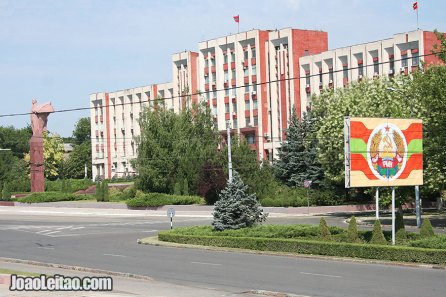
Picture 04: Tiraspol
Since 2009, Moldova faced a political instability. It was a reason for Russia and Transnistria to refuse further negotiation about the conflict. At the beginning of the year 2010, Russia presented new conditions for the negotiation. Russia wanted a new state created by two areas- Moldova and Transnistria. In this state, Transnistria should be neutral. It seems to be the biggest problem for Moldova. If both regions create one state, Transnistria could veto a potential joining of this state to the western organizations such as the European Union or the NATO.
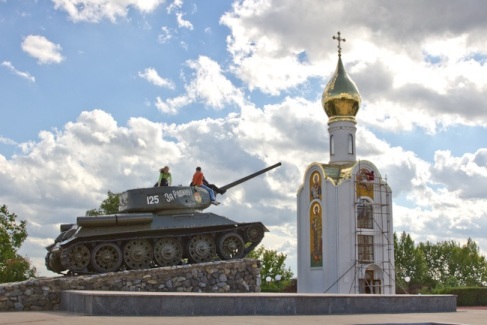
Picture 05: Tiraspol
Conclusion
And why does Russia put so much effort in this conflict? At the end, it is quite simple. Russia doesn’t want Moldova to join the EU, the NATO, and other western organizations. In the case of the NATO, Russia doesn’t want to have the formerly hostile troops under the main command of the US near its territory. In the case of the European Union, Russian would lose an economic and political influence over the Moldova if it joins the EU.
On the other hand, Russia wants to gain a power in Europe and Transnistria can be an outpost of Russian influence in Europe and the base for following actions. Because of Transnistria, Russian can influence not just a policy of Transnistria but even a policy of Moldova.
As I tried to show, Russia plays an essential role in the frozen conflict in Transnistria. Russian was at the beginning of the conflict and tries to help Transnistria to fight during the Transnistrian war and is still present there.
Resources
- JELÍNKOVÁ, Barbora, 2015. Role Ruska v mediaci zamrzlého konfliktu v Podněstří. In: cz[online]. [cit. 2017-08-11]. Dostupné z: https://www.valka.cz/clanek_14499.html
- KOHL, David, 2016. Podněstří: Centrum příští evropské války? In: cz[online]. [cit. 2017-08-11]. Dostupné z: http://www.armadninoviny.cz/podnestri-centrum-pristi-evropske-valky3f.html
- WALKER, Edward W., 2014. Transnistria: A bridge too far for the Kremlin? In: Eurasian Geopolitics[online]. [cit. 2017-08-11]. Dostupné z: http://eurasiangeopolitics.com/2014/07/03/transnistria-a-bridge-too-far-for-the-kremlin/
Sources of pictures
- http://russia-insider.com/en/politics/new-conflict-brewing
- http://pineappleexplorer.com/2016/04/21/visiting-transnistria-last-outpost-soviet-union/
- http://www.young-diplomats.com/ghost-countries-transnistria-look-one-unrecognized-state/
- http://www.joaoleitao.com/adventure/visit-tiraspol-transnistria/-transnistria/ri7382
- http://www.rearviewmirror.tv/transnistrias-wild-independence-day-celebrations/:

Transnistria is just a mafia state, shame of Europe and Moldova with Romania should occupy it ASAP!
LikeLiked by 1 person
Exactly VladTepes, we could divide it between Moldova and Ukraine, we gladly help you with those Russian communists who stand in our way to join the civilised Europe together.
LikeLiked by 1 person
How is it even possible that Russia is able to make a president of a sovereign country resign (rhetorical question out of frustration)?! It’s alarming that Russia has such influence even in present day. I don’t know about others, but your posts have altered my view on Russia in IR and it’s not for the better. In my opinion, a series of eye-opening articles on issues I didn’t know about! Thanks!
LikeLiked by 1 person
God, these informations makes me really sick. It almost sounds like parallel with history of Czech Republic and Soviet “fraternal assistance” in 1968.
LikeLiked by 1 person
I have expected little bit more information and deeper insight about the concept of frozen conflicts.
LikeLiked by 1 person
Thank you for your comment. But the main purpose of this post was to introduce the region of Transnistria, its conflict and the role of Russia in it. Although a concept “frozen conflict” is important, I wanted to present the case study of Transnistria, not define generally frozen conflicts in detail.
LikeLike
I agree with you Gandalf, the concept of “frozen conflict” could be described in more details. Otherwise I like this post and I will use these informations for my futures studies.
LikeLiked by 1 person
Hi, thank you for this article, I didn’t know about this situation. It seems like a desperate situation for Moldavia. What do you think would be the solution to make this situation better and to help get rid of the russian influence?
LikeLiked by 1 person
Thank you for your comment. It is hard to say. Without the Russian support, it is possible that the conflict in Transnistria would end or Transnistrians would fight even more to be independent.
LikeLike
I didn’t know about this Frozen Conflict at all but it seems to be a very important problem to which we should pay attention so thank you for shining light on it. In my opinion we all knew that Russia is not one of the “good guys” in the IR but this is a whole new level. It is a shame that we probably can’t do anything about it because we need Russia. I would never think I would say this but in today’s political situation Russia is one of the few “save” world powers because at least we know what to expect from them and maybe we will all need it very soon…
LikeLiked by 1 person